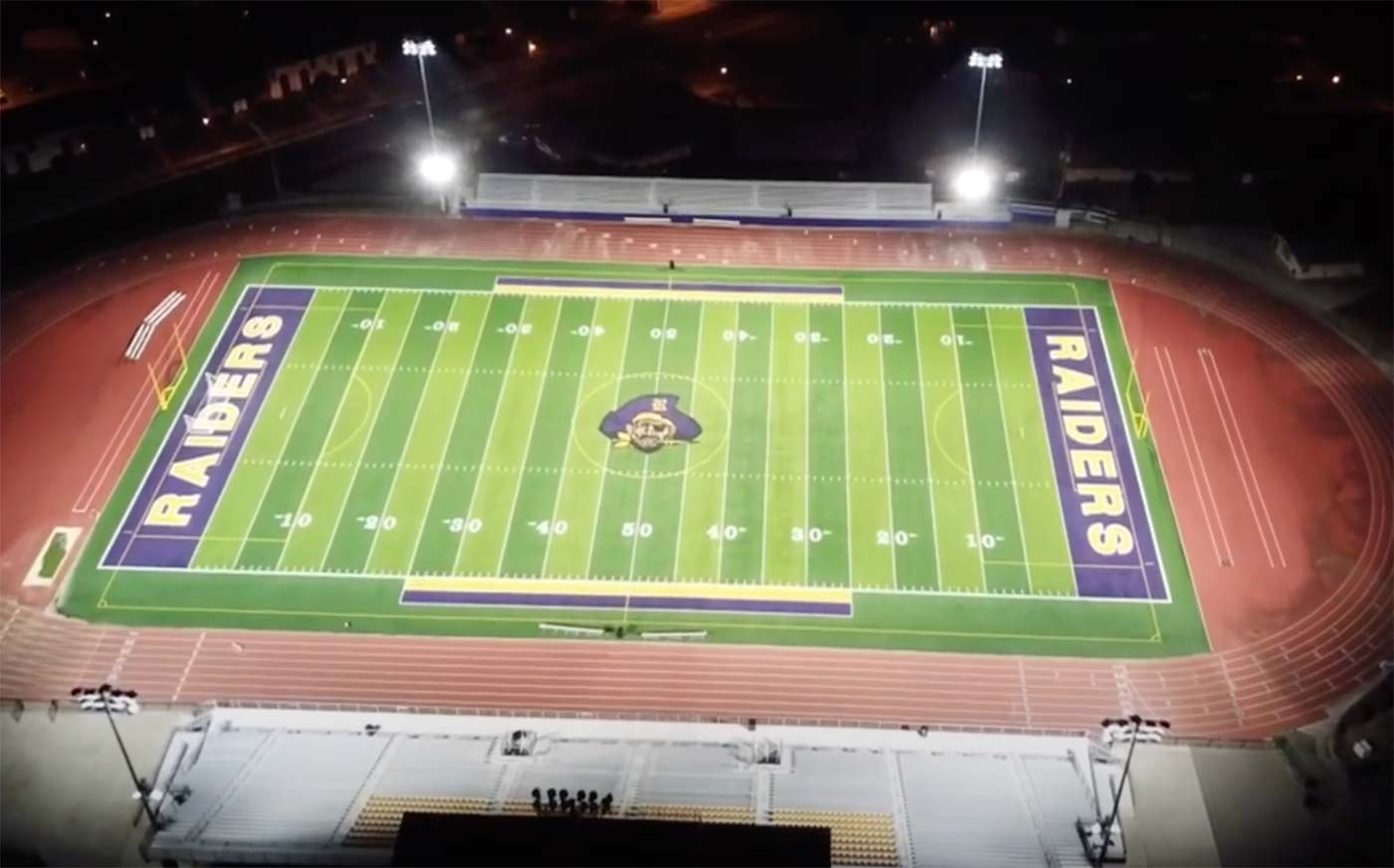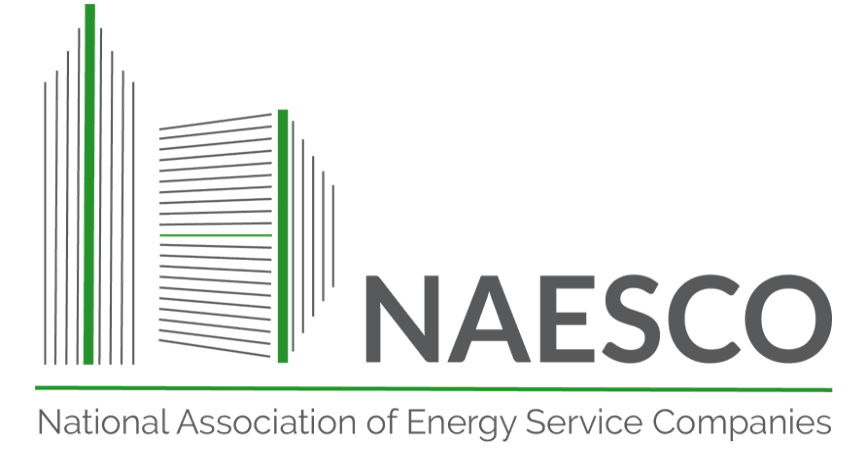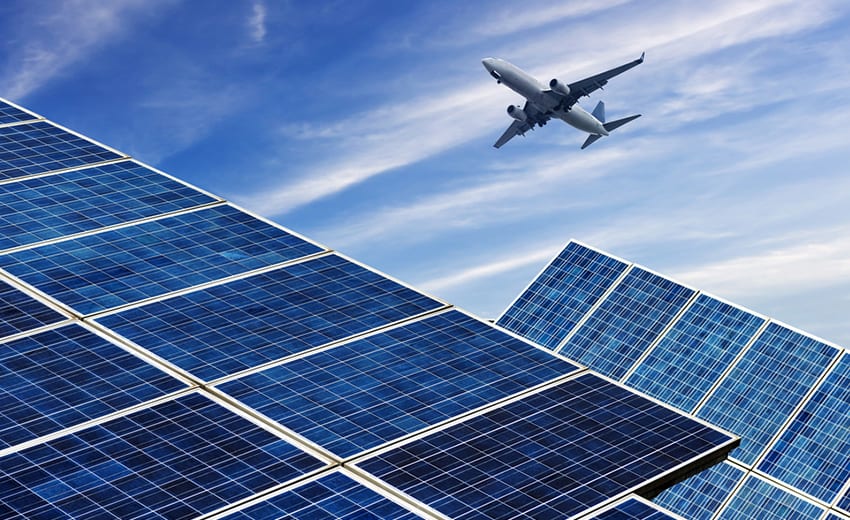Illuminating the Game: The Unparalleled Benefits of LED Lighting for High School Athletic Fields
By Rob Coy and Becky Werra, Veregy, LLC and Musco
In sports, stadium lighting quality plays a pivotal role in the overall experience for players, coaches, and spectators. Districts continually seek innovative solutions to enhance performance, safety, and spectator enjoyment. One solution that has revolutionized stadium lighting as technology advances is light-emitting diodes (LED).
LED lighting has emerged as a game-changer in the sports lighting industry, offering many benefits that surpass traditional lighting systems. This article delves into the advantages of LED lighting for outdoor courts, fields, and stadiums, highlighting why it is the future of athletic field lighting and should be considered in your District.
Energy Efficiency and Operational Cost Savings – LED lighting is known for being energy efficient. Requiring significantly less energy to operate than traditional lighting, LED lighting offers substantial energy and operational cost savings. This energy savings is significant for high school stadiums operating for extended periods. Moreover, LED lighting has a longer lifespan than fluorescent lighting, reducing the frequency and cost of replacement and eliminating the need for massive boom lift rentals for frequent bulb replacements.
In addition to energy savings, demand savings are another benefit of LED lighting. LED lighting systems achieve demand savings through a “ramping up” or “phased start-up.” This technique involves turning on the lights over a period of time rather than instantaneously turning them on at full brightness. The gradual increase in lighting load helps to reduce peak demand on the electrical grid.
Here’s how it works:
- Gradual ramping up of LED lighting reduces peak demand while eliminating the sudden surge in demand that occurs when numerous lights and electrical devices are switched on simultaneously.
- This allows for better load balancing on the electrical system. Rather than a sudden spike in power consumption, the load is distributed more evenly over time. This helps stabilize the grid and ensures the power supply is efficiently distributed without overloading specific circuits or transformers.
- Demand Response Programs, provided by some utility companies, offer customers incentives for reducing their electricity consumption during peak demand. Stadiums and large facilities can participate in these programs, using the ramp-up strategy with LED lighting to contribute to demand reduction efforts. This yields financial benefits for the customer by reducing energy bills and resulting in incentives from the utility provider. Additional information on Demand Response programs can be found on the energy.gov website.
- LED lighting systems can be integrated with advanced energy management systems. These systems can be programmed to control the ramp-up process based on real-time electricity demand data or pre-determined schedules. By optimizing the lighting load and coordinating it with other energy-consuming systems within the stadium, the overall electricity demand can be efficiently managed and minimized.
Implementing a ramp-up or phased start-up strategy with LED lighting, stadiums, and large facilities can contribute to demand savings by reducing peak demand, balancing loads, participating in demand response programs, and effectively managing their energy consumption. This benefits the electrical grid and leads to cost savings and improved sustainability.
Traditional HID fixtures require a warm-up period to bring the fixtures to full brightness. This process can take up to 15 minutes, multiplied by each day you turn on the lights. Over time, this warm-up period can result in significant costs incurred for lighting not at full lumen output.
One example where this warm-up created a delay was at Super Bowl 47, when the power went out, and the game was delayed for 34 minutes before the lights came back to full-lumen output or brightness. Three years later, the stadium spent $1.1 million with Musco to upgrade to LED lighting.
Environmental Sustainability – In an era where sustainability is a global priority, LED lighting is an environmentally friendly solution. By consuming less energy, LED lights reduce the carbon footprint of athletic fields. Furthermore, unlike traditional lighting systems, LED lighting does not contain harmful substances like mercury, making their disposal less damaging to the environment.
Superior Illumination and Special Effects – LED lighting provides superior illumination compared to traditional lighting systems. This type of lighting offers a brighter, more uniform light that significantly improves the visual experience. This enhanced visibility is crucial in athletics, where players must track the ball accurately, and spectators want to follow the action without straining their eyes.
LED fixtures can be programmed to create light shows, synchronized lighting patterns, and color changes during player introductions, halftime shows, or celebratory moments. This adds an element of spectacle and excitement to the sporting event, boosting the overall atmosphere.
Directional Lighting – LED lighting is highly directional, emitting light in a specific direction, unlike traditional lighting sources that disperse light in multiple directions. This allows for precise targeting of the light onto the playing field or desired stadium areas, minimizing light spillage into the surrounding environment. Many LED systems can have advanced control mechanisms, such as dimming and zoning capabilities. This allows operators to adjust brightness levels and focus the light exactly where needed, avoiding unnecessary light scatter.
LED lighting can be designed with proper shielding and optics to minimize the amount of upward-directed light. By directing the light downward onto the field, LED stadium lighting significantly reduces skyglow, also referred to as night sky pollution, a form of light pollution that contributes to the brightening of the night sky. Night sky pollution has many negative impacts, including disruption of ecosystems, human health impacts, energy waste, and light pollution in neighboring homes during late games.
Improved Photo Quality – LED lighting significantly enhances the quality of photos. The bright, consistent light reduces shadows and glare, ensuring parents can capture clear, crisp images of their athletes. This is particularly important for local newspapers memorializing athletic events with high-resolution photos.
Safety and Player Performance – The superior illumination provided by LED lighting contributes to player safety by reducing the risk of accidents caused by poor visibility. Furthermore, controlling the brightness and direction of LED lights can help reduce glare, preventing interference with player vision and performance. Directional lighting ensures that every nook and cranny, including bleachers, stairways and tunnels, concessions, and restroom areas, are adequately illuminated, providing a safe environment for all.
As we move towards a more sustainable and technologically advanced future, adopting LED lighting is not just a smart choice—it’s inevitable. Companies specializing in sports lighting, such as Musco, offer valuable tools to identify specific benefits and savings calculations for your unique outdoor athletic space.
Want to see more? Check out these project videos and case studies.
- Reynoldsburg School District, Ohio
- Amanda Clearcreek School District, Ohio
- Teays Valley Local School District, Ohio
- Wayne Township Metropolitan School District, Indiana














